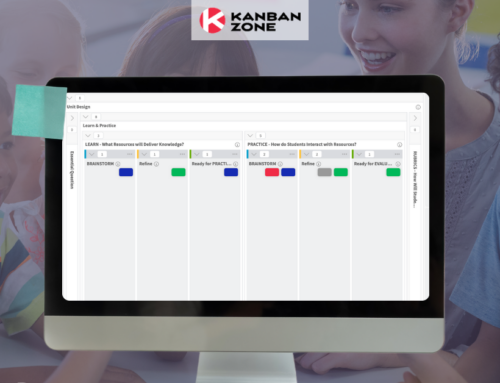Many factors are in play when it comes to managing projects. Resources, time, budget, scope, requirements, and stakeholder feedback are all project elements that managers and teams juggle on a daily basis. While teams and managers apply their best efforts to keep a project on track, mishaps do happen.
The Project Management Institute’s (PMI) Pulse of the Profession 2018 reports that only 64% of teams with high maturity value delivery capabilities are able to complete projects on time. Also, about 67% of them are able to complete it within budget. But that’s for high performing teams. For teams with low maturity value delivery capabilities, only about 36% complete their project on time. While 43% have completed them within budget.
If we look at it by the business bottom line, PMI’s report estimates about 9.9% of every dollar goes to waste because of poor project performance. This translates to about $99 million for every $1 billion invested. This is too much money going down the drain and if we don’t do anything about it, the costs will pile on.
While working on projects over the years, we have identified 8 of the most common mistakes in project management. We also explored how Kanban is able to address these mistakes and help turn things around. Let’s check out what these project management mistakes are and how you can fight them off with Kanban.
Mistake 1: Not breaking down projects into smaller tasks
Once a project commences, the team needs to know how to execute the project. Imagine a team getting assigned to create an eCommerce store for a large retail brand. Only knowing that they need to build an online store without specifying what it needs to have can be confusing and overwhelming. The team would not know where to start. The site would need a lot of functionalities including order processing and management, inventory management, fulfillment, product and pricing management. Within these major function groups, there are sub-functions and features that go in as well. Without a clear picture of what these are, the team would aimlessly hit at developing the features in the hopes that they get it right.
The first step into any project would be to identify the necessary tasks that need to take place to complete it.
In Scrum, the Product Backlog has epics and user stories that define the necessary features that go into a product. In traditional Waterfall, the Work Breakdown Structure (WBS), as stated in the Project Management Body of Knowledge (PMBOK), is a deliverable-oriented hierarchical decomposition of the work to be executed by the project team. Whatever methodology you use, you must have a way to breakdown your project. Smaller tasks guide your team’s execution and prevent them from feeling overwhelmed.
Now, how does Kanban help solve this common project management mistakes?
You can superimpose Kanban to any process or project management methodology you are using to have a visual representation of your project. You can even use Kanban on its own if you’re struggling to decide what project management methodology to use. This is because Kanban in itself is task-driven. Each task, feature, or any item, would go as a card in your Kanban board. You’d let each card flow through your product development process. A good thing about Kanban is not only is your project decomposed into more manageable chunks. But you can visualize what those chunks are. By visually presenting it to the team, it would be easier for them to digest and execute without worrying about what to do next.
Mistake 2: Not clearly prioritizing projects and tasks
One of the most common mistakes in project management is failing to prioritize tasks. You may be great at breaking down your project into smaller tasks. But if you are not able to communicate which tasks take precedence against others, then your project can fail.
Why? It’s because you are not delivering what is VALUABLE. Your clients and stakeholders will judge your product on the customer value they get. Prioritization has a big role in ensuring deliverables anchor to customer value perception. Any project manager should ensure that they breakdown tasks and prioritize them right after. This ensures that whatever the team works on at any given moment will yield the most value for its consumers.
In Kanban project management, tasks are prioritized as they are added to the backlog. The tasks at the top of the board mean they are a higher priority. Teams work through their backlog from top to bottom. Prioritization usually happens during Replenishment Meetings of Kanban teams. They would more often use a defined Class of Service to help them in determining the priorities of these tasks during the meeting.
Mistake 3: Not being flexible to changes
We all know that scope creep can be one of the most common mistakes in project management. But we are not going to focus on that for this discussion. Instead, we want to highlight why there is a need to be flexible to changes in scope. This is not to say that teams should agree to any and all changes that come their way. But we need to recognize the agility that this era demands from companies to adapt to their market.
Advancement in technologies affects project scope. These also affect the mindset of consumers in that their requirements and expectations can change quite quickly. What this means for companies is that they need to deliver fast and adjust when the project needs to change course.
Responding to change instead of resisting it is key to making any business thrive. But companies need to find the balance when responding to market demands and business direction changes. This requires the development of practices that allow requirements to evolve. The team and its key stakeholders work together in driving its evolution. Project teams need to be in constant communication with their stakeholders to define what changes are acceptable and necessary to make the product profitable.
Some methodologies can be too rigid when it comes to accommodating change. Some would need requirement sign-offs from stakeholders. Some would “lock” functional specifications from changes once development starts. Kanban as a project methodology embraces change. Should there be any changes in product direction, you can create new task cards. This allows any team member to work on the new task. Kanban also allows teams to achieve continuous delivery. As soon as a task is completed, the team can release it to market. There is no fixed time for releases. The faster you introduce a product or feature to the market, the earlier we can get feedback and respond to it.
Mistake 4: Micromanaging
Have you ever had a project manager who seems to always want a status report on your tasks? Or how about the one who seems to be looking over your shoulder as you work? We hope you did not experience this nor were you like this to your team. These are the common mistakes in project management that some managers don’t recognize as a fault.
Micromanaging your team can do you more harm than good. We get it, you want to make sure your project is on track. But putting your employees on a leash can disengage them. Unhappy employees will affect the delivery of your product and we don’t want that.
Kanban removes the seeming need for you to micromanage your team because you can see the status of your project through your Kanban board. At a glance, you know what each team member is working on. You can easily identify items at risk of meeting your deadlines, bottlenecks, overburden, or idleness. We’re not suggesting that you only look at your Kanban board and remove all communication from your team. The Kanban board will provide more targeted discussions based on the information you see. You’ll be able to offer help when needed instead of questioning your team whether they’re working on their tasks or not.
Mistake 5: Having too many meetings
Ever wonder how much time employees devote to meetings? A survey in the UK reported that an employee spends an average of 10 hours per week preparing for and attending meetings. This roughly translates to 4.4 meetings and about half of them are unnecessary. We seem to have this belief that all meetings are productive. But if all you do is meet in a boardroom all day, how are you ever going to find time to do real work?
Kanban project management allows you to avoid having unnecessary meetings. This is due to the accessibility of your project information. Anyone on the team or organization can see what’s going on within your board. Save a lot of time during meetings by skipping the background information and getting straight to the details as presented on your board.
We also find that meetings in Kanban teams can happen instantaneously. No need to book the boardroom for your meeting. It’s very natural for teams to collaborate and reach out to their team members because the information on their tasks is shared.
Mistake 6: Not taking the time to review your process
Another common mistake is when managers and teams fail to review how they do their work. Why is this a mistake you may ask?
Your team can produce or experience wastes in your project including defects, delays, rework, and overproduction. If you don’t take the time to recognize that your process is churning out wastes, your production will be costly.
Another side is that project complexity is on the rise. PMI estimates that projects with high complexity have risen from 35% in 2013 to 41% in 2018. What this means is that a process that worked for you in the past, may not always be applicable to your future projects. There could be new delivery requirements that need to be fulfilled. It is always good practice to evaluate your process to determine its ability to adapt to these changes and complexities.
One of the Kanban project management principles is “Agree to pursue incremental, evolutionary change.” It is with a continuous improvement mindset, or Kaizen, that teams can better evolve. Kanban promotes this by helping teams discover visually the inefficiencies they are experiencing. At the same time, it also helps teams battle complexity through continuous delivery and feedback loops.
Mistake 7: Not using a project management tool
A project management tool can be your secret weapon. It allows you to easily plan projects and keeps you informed if the project is on track or not. It helps you manage your team’s tasks more efficiently and promotes better collaboration within your team.
If you’re using Kanban, then you most likely have at least a basic project management tool – your Kanban board. The Kanban board is a great tool due to its visual approach to presenting project information. If you want to take it up a notch, you can use Kanban software to manage your projects. Online Kanban tools, such as Kanban Zone, have smart interfaces that allow managers and teams to execute their project and track their progress.
Tools, such as Kanban Zone, not only allow teams to manage their tasks, it also has rich features for team collaboration, document sharing, and project analytics. These features allow for a seamless workflow within the team. Metrics allow teams to forecast project timelines and plan improvement initiatives.
Mistake 8: Expecting software to run on auto-pilot
Just because you’re using a fancy project management software, doesn’t mean your project is guaranteed to be a success. It’s not only the software you use, but it’s also how you use it and how you work as a team. Remember that tools are there to help you solve your problems, not solve your problems for you. No matter what methodology and software you use, the success of your project will be driven by the collective effort of your team.
The nice thing about Kanban tools, such as Kanban Zone, is that team collaboration is at the core of its software. For maximum results, the team needs to create and maintain their board together. It is a very interactive way of managing your project tasks.
Getting Started with Kanban
Now that you know the common mistakes in project management, take the time to reflect as a team and assess which ones you are currently experiencing. We hope this guide helps you determine needed changes and how you can improve them with Kanban. If you’re one of the lucky ones who has not committed a project management mistake, consider using Kanban to increase your chances of avoiding them. Here is a step-by-step guide to implementing Kanban to get you started. If you’re using Waterfall methodology for your projects, check out our Waterfall board template.
Learn to Work Smarter, Not Harder!
Get our top articles weekly.
Table Of Contents
Discover many more posts…






